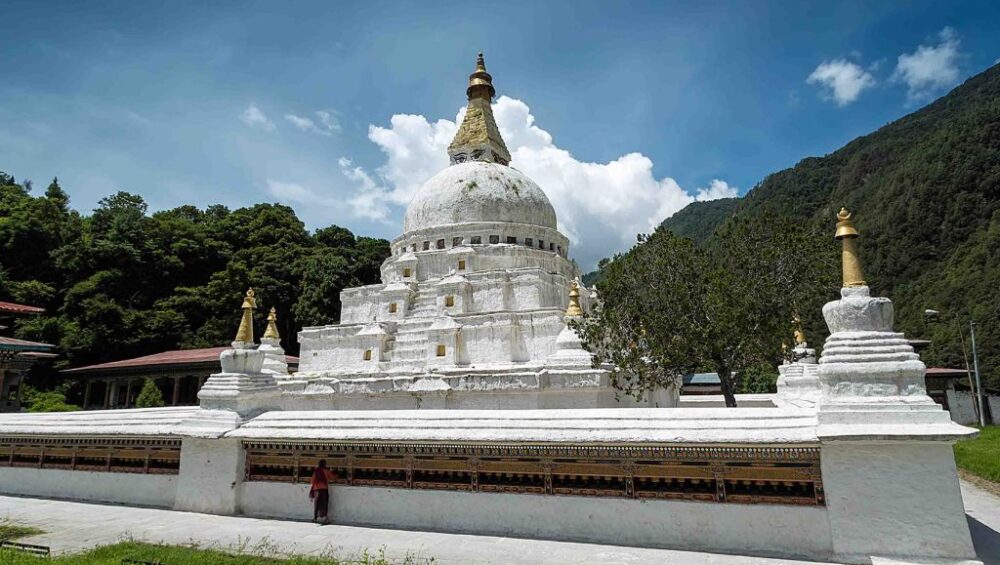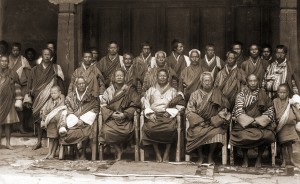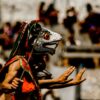Weather, Climate, Flora & Fauna
Weather & Climate
Geographically, Bhutan is a land of dramatic contrast. From the near tropical southern border with India, steep slopes climb to snow-capped heights of over 24,750 feet / 7,500m at the northern border with Tibet. Consequently, temperatures vary greatly between day and night and at different altitudes, so layered clothing for changing conditions, is recommended. In the central valleys, the summer rains are not as heavy as in the south and occur mostly in late afternoon and at night. From mid-May to the end of September, the weather is warm at night (60-64F/17-18C) and in the day (72-78F/22-26C). In winter, the sky is bright and it is sunny but cold, especially when the sun hides behind the mountains in the mornings and evenings. At night, the temperature falls below zero. Spring and Autumn are very pleasant with warm days and cool nights.Flora & Fauna
Forest types in Bhutan are fir forests, mixed conifer forest, blue pine forest, chirpine forest, broadleaf mixed with conifer, upland hardwood forest, lowland hardwood forest, and tropical lowland forests. Almost 60% of the plant species found in the eastern Himalayan region are present in Bhutan.
Bhutan boasts of about 300 species of medicinal plants and about 46 species of rhododendrons. Some common sights for the visitors are the magnolias, junipers, orchids of varied hues, gentian, medicinal plants, Daphne, giant rhubarb, the blue and trees such as fir, pine and oaks.

A wide range of rare and endangered animals can also be found frequenting the dense jungles and high mountains of Bhutan. Due to the countries conservation efforts and its unspoiled natural environment Bhutan supports thriving populations of some of the rarest animals on earth and has thus been classified as one of the last biodiversity hotspots in the world.
Some high altitude species are the snow leopards, Bengal tigers that are found at altitude ranging 3000 to 4000 meters, the red panda, the gorals and the langurs, the Himalayan black bear, sambars, wild pigs, barking deer, blue sheep and musk deer.
In the tropical forests of Southern Bhutan one can come across clouded leopards, the one horned rhinoceros, elephants, water buffaloes and swamp deer. You can even find the Golden Langur, a species of monkey that is unique to Bhutan.
Bhutan also has a great variety of bird species. It is recognized as an area of high biological diversity and is known as the East Himalayan ‘hot spot’, the hub of 221 global endemic bird areas. The recorded number of bird species is over 670 and is expected to rise as new birds are discovered.
In addition, 57% of Bhutan’s globally threatened birds and 90% of the country’s rare birds are dependent on forests. Bhutan has about 415 resident bird species. These birds are altitudinal refugees, moving up and down the mountains depend

ing upon the seasons and weather conditions. Of about 50 species of birds that migrate during the winters are the buntings, waders, ducks, thrushes and the birds of prey. Some 40 species are partial migrants and they include species such as swifts, cuckoos, bee-eaters, fly catchers and warblers.
Bhutan is also home to about 16 bird species that are endangered worldwide. These include the White bellied heron, Pallas Fish eagle and Blyth’s King fisher to name a few. Phobjikha valley in Wangdue Phodrang and Bomdeling in Trashi Yangtse are also two especially important locations of the endangered Black Necked Cranes.
As one of the ten global hotspots, Bhutan is committed to preserve and protect its rich environment through its government and environmental organizations. This commitment is apparent in the fact that the kingdom has the distinct honor of being one of the only nations whose forest cover has actually grown over the years.

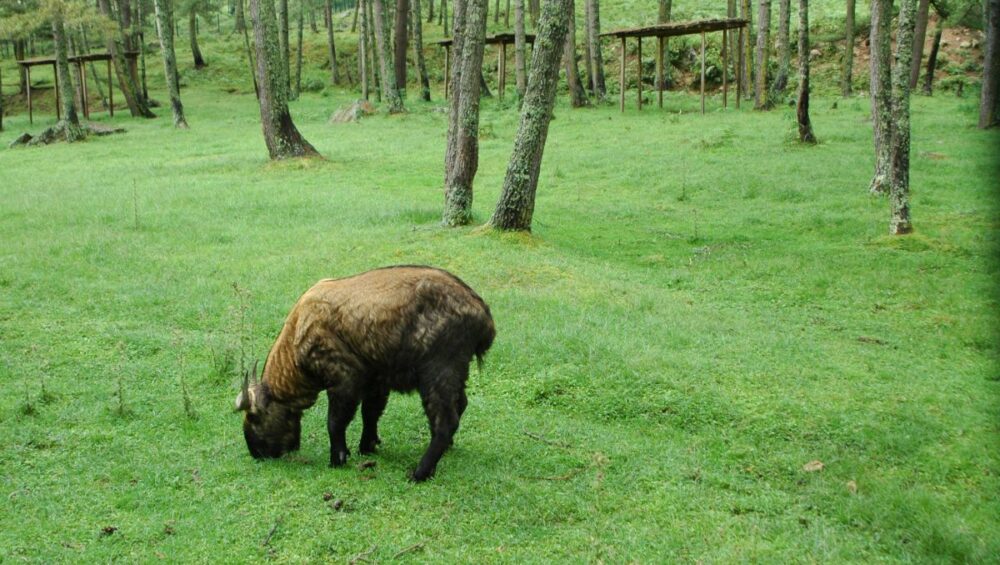
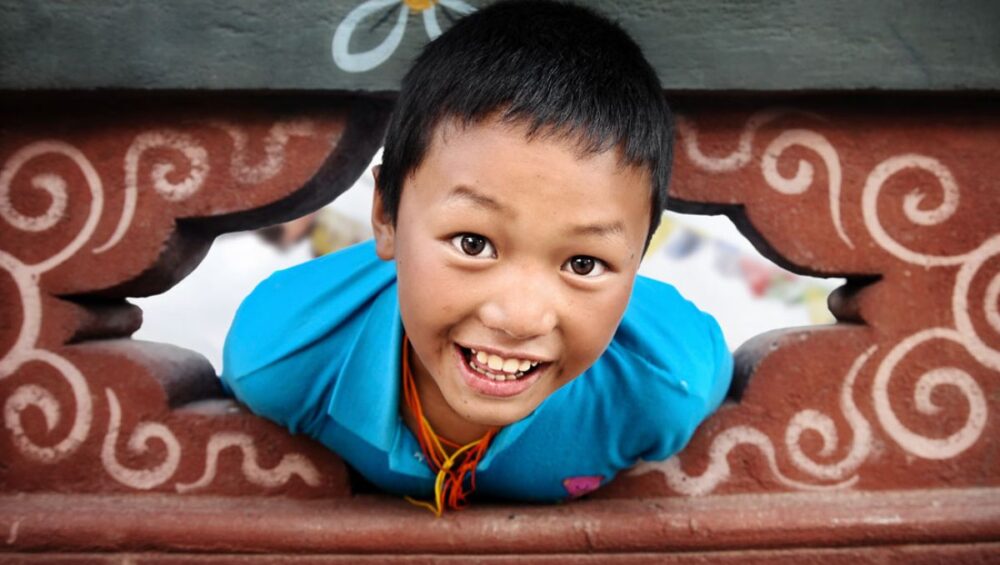
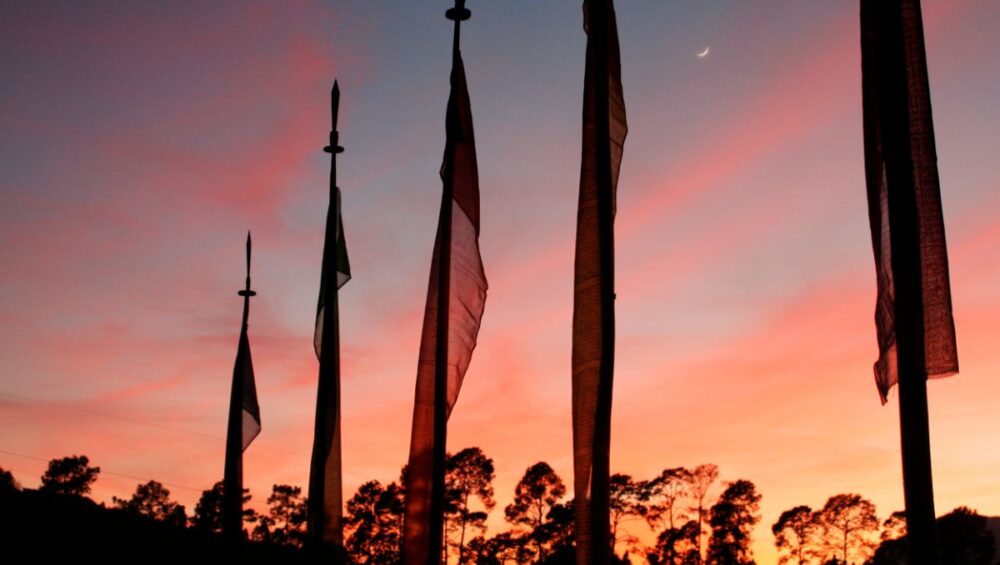
 bird is the raven. As noted above, it the most prominent component of the royal crown. In Bhutan, the raven represents the deity Gonpo Jarodongchen, the raven-headed Mahakala, one of the country’s chief guardian deities.The Bhutanese credit the raven with having guided the founder of Bhutan, Shabdrung Ngawang Namgyal, to victory during the invasion from Ü-Tsang (Tibet) in the seventeenth century.
bird is the raven. As noted above, it the most prominent component of the royal crown. In Bhutan, the raven represents the deity Gonpo Jarodongchen, the raven-headed Mahakala, one of the country’s chief guardian deities.The Bhutanese credit the raven with having guided the founder of Bhutan, Shabdrung Ngawang Namgyal, to victory during the invasion from Ü-Tsang (Tibet) in the seventeenth century.
 ontained in a circle, is composed of a double diamond-thunderbolt (dorje) placed above a lotus,surmounted by a jewel and framed by two dragons. The thunderbolt represents the harmony between secular and religious power. The lotus symbolizes purity; the jewel expresses sovereign power; and the two dragons, male and female, stand for the name of the country which they proclaim with their great voice, the thunder.” It is also known for its symbolic colors of the emblem with the gold, teal, red etc.
ontained in a circle, is composed of a double diamond-thunderbolt (dorje) placed above a lotus,surmounted by a jewel and framed by two dragons. The thunderbolt represents the harmony between secular and religious power. The lotus symbolizes purity; the jewel expresses sovereign power; and the two dragons, male and female, stand for the name of the country which they proclaim with their great voice, the thunder.” It is also known for its symbolic colors of the emblem with the gold, teal, red etc.




